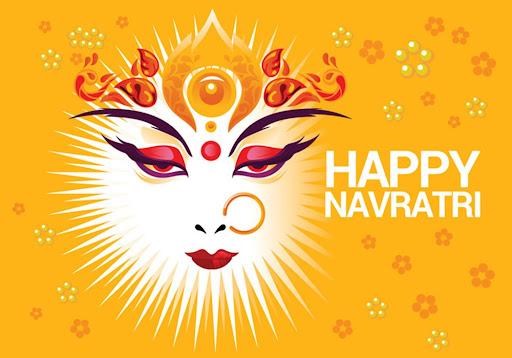How is Navratri Celebrated in Different States Of India?

By Madiha Faiyaz
India is a land of diverse cultures. Everything here is unique. Diversity is seen in almost every aspect of life. Be it religion or food, a wide variety is seen everywhere. The language here changes every 20 km. This makes India one of the most colorful and beautiful countries in the world.
One such Hindu festival which is celebrated here is Navaratri. India has an area of about 3.3 million square kilometers. This festival too is celebrated differently in various states of India. Be it the exciting Durga puja pandals of the western country, or the beautifully synchronized Garba of the western part, nothing fails to mesmerize the world.
In North India, Navratri is celebrated as the victory of Lord Rama over the evil king Ravana. It culminates in the celebrations of the Ramlila which is enacted ceremoniously during Dussehra.
The first nine days include fasting, meditation, and singing and dancing in honor and praise of goddess Durga. On the ninth day, young girls who are yet to hit puberty are called and worshipped. This tradition is called the Kanya puja. Finally, on the 10th day, the effigies of Ravana, Kumbhakarna and Vibhishan, are burnt to celebrate the victory of good (Rama) over evil forces. This day is the 'VijayaDashami' or the last day of the festival.
In the western part, particularly in the state of Gujarat, Navratri reminds of the catchy Garba music and the grand Garba and dandiya celebrations. Garba is derived from the Hindi word ‘garbh’ which means womb. Here also women are celebrated in this festival. Men and women are eye-catchy and glittery mirror embedded Chaniya Choli or Ghagra Choli; Women also wear an Odhni (dupatta or chunni) with it. Men also wear turbans and kedias. Some people even fast during these days, despite which they attend Garba each evening. In short, “Navratri is the time to visit Gujarat and take part in these festivities."
In the east, especially in the Bihar and West Bengal region, the last 5 days of Navaratri is celebrated as Durga puja, which is worshipping goddess Durga. Durga is the symbol of women's empowerment. She rides a lion and has a weapon in her hands she symbolizes power.
the favorite part of the puja is attending the Maha Aarti every evening with the sound of the dhol in the background, and as a result, the trance-like state many of us experience.
Some pandals are super fancy, done up with great lighting and sound, while the others are more simple and elegant. It's also the time when women take out their gorgeous Bengali saris, and men dress up in kurta-pyjamas. devotees offer prayers in the evening and perform a dhunuchi naach, a special dance with earthen lamps. The colorful cultural displays, the lively atmosphere, the bright lights adorning the city-under the spell of Durga Puja, the City of Joy surely does begin to do justice to its name. Dancing to upbeat dhaak beats, going on a pandal-hopping spree, munching on lip-smacking bhogs, is a must-do during Durga puja in West Bengal.
In the southern part of the country, this festival is celebrated as bathukamma. It is time for the women of Andhra Pradesh to invoke Mother Gauri, the benign goddess, for blessing them with conjugal bliss. Unmarried girls join the communal worship to seek a spouse of their choice. The festival is called Bathukamma Panduga in the Telugu language which means Mother Goddess, Come Alive! Women create flower stacks in a time-honored style using local flowers for the worship of Mother Divine. On the final day of the festival, this stack is immersed in a lake or a river.
Mysore Dasara is the Nadahabba or the state festival of Karnataka, celebrated with utmost spectacle and joy in the city of Mysore where it follows the same rituals that were first practiced by King Raja Wodeyar I in 1610. On mahanavami (the ninth day of the festival), the royal sword is set on a throne to be worshipped and taken on a procession of elephants and horses. On the 10th day (Dashami), another grand procession of dancers and musicians escorting an image of goddess Chamundeshwari (a form of Durga) mounted on a golden saddle atop an elephant is carried through the city.
The last day of Navratri, also called Vijayadashmi, is celebrated in Kerala by decorating 108 Durga temples. People of the most literate state in India also prefer to instill their values of education, worship of domestic animals, and vehicles in their celebrations. On this day, Keralites worship Goddess Saraswati and students keep their books in front of her idol for two days along with other offerings such as sugarcane or jaggery. The celebration is blended with Kerala’s own local culture and traditions and a taste of the same by any passing tourist is indeed a soulful experience.
In the state of Tamil Nadu, Navaratri pays homage not only to Durga but also to other Hindu goddesses like Laxmi and Saraswati. Legends say that the three goddesses are venerated on three separate days during which friends and family gather to celebrate and exchange gifts, such as clothes, sweets, and coconuts. Another custom typical of the Navaratri celebrations in Tamil Nadu is the display of kolu (figurines of dolls), which are arranged to narrate popular legends from the Hindu scriptures.
Ayudha Puja is also conducted in many parts of Tamil Nadu on the Mahanavami (Ninth) day with much fanfare. Agricultural implements, tools, books, musical instruments, machinery, and automobiles are decorated and worshipped on this day along with Goddess Saraswati.
(The author is an intern at Sakshi Post and a student of Suchitra Academy.)




